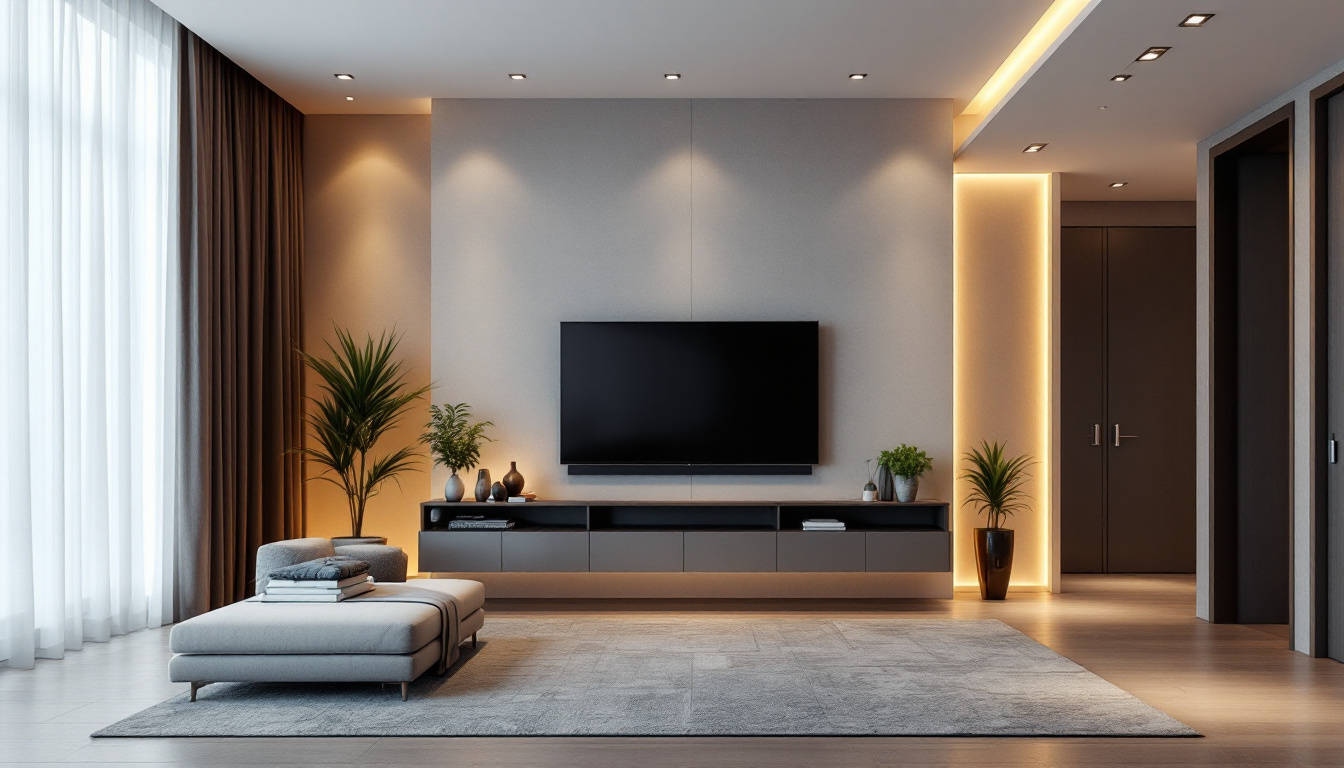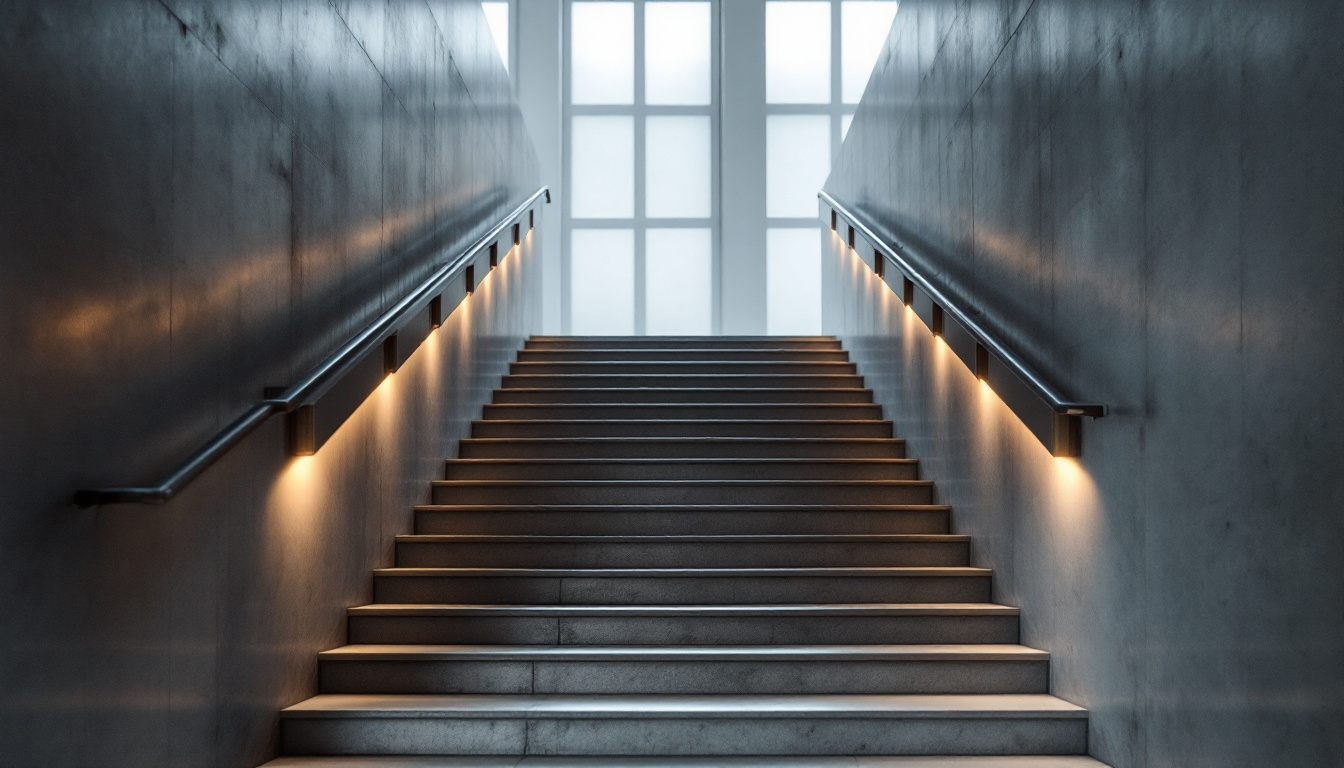
In recent years, recessed LED lights have gained significant traction in the lighting industry, transforming the way spaces are illuminated. These fixtures, which are installed into the ceiling, provide a sleek and modern aesthetic while delivering energy efficiency and versatility. For lighting contractors, understanding the growing importance of recessed LED lights is essential for staying competitive in a rapidly evolving market.
The journey of lighting technology has been marked by continuous innovation, with each advancement bringing new possibilities for design and functionality. From incandescent bulbs to fluorescent tubes, and now to LED technology, the evolution has been driven by the need for energy efficiency and longer-lasting solutions.
Recessed lighting, in particular, has evolved from traditional halogen and incandescent options to energy-efficient LED alternatives. This transition not only reduces energy consumption but also minimizes heat output, making these fixtures safer and more sustainable.
One of the most compelling reasons for the rise of recessed LED lights is their energy efficiency. Unlike traditional lighting options, LEDs consume significantly less power, which translates to lower electricity bills for consumers. This efficiency is especially appealing to environmentally conscious clients who are looking to reduce their carbon footprint.
Moreover, the longevity of LED lights—often lasting up to 25 times longer than incandescent bulbs—means fewer replacements and less waste. This durability aligns with the growing trend towards sustainability in construction and renovation projects, making recessed LEDs a preferred choice for contractors aiming to meet modern building standards. Additionally, many LED products are now designed with recyclable materials, further enhancing their eco-friendly credentials and appealing to a market that increasingly values sustainable practices.
Recessed LED lights offer unparalleled design versatility, allowing contractors to create customized lighting solutions that cater to various architectural styles and client preferences. These fixtures can be used to highlight specific areas, provide ambient lighting, or even serve as task lighting in workspaces.
With a range of color temperatures and beam angles available, recessed LEDs can be tailored to create the desired mood and functionality in any space. This adaptability not only enhances the aesthetic appeal of a project but also demonstrates a contractor’s ability to meet diverse client needs. Furthermore, the integration of smart technology into recessed lighting systems has opened up new avenues for control and customization. Homeowners can now adjust brightness and color settings through mobile apps or voice commands, allowing for a truly personalized lighting experience that can change with the time of day or occasion.
The applications of recessed LED lights span both residential and commercial environments, making them a versatile choice for contractors working in various sectors. From homes to offices, retail spaces to hospitality venues, these fixtures can be integrated seamlessly into any design.
In residential settings, recessed LED lights are frequently used in living rooms, kitchens, and bathrooms. Their ability to provide soft, even illumination makes them ideal for creating cozy atmospheres in family spaces, while their directional capabilities allow for focused lighting in task-oriented areas like kitchens.
Additionally, homeowners appreciate the unobtrusive nature of recessed lighting, which can enhance the overall aesthetic of a room without drawing attention to the fixtures themselves. This is particularly beneficial in modern designs where clean lines and minimalism are key elements. Furthermore, recessed lighting can be used to create layered lighting designs, combining ambient, task, and accent lighting to achieve a well-rounded illumination scheme that enhances the functionality and beauty of each space.
Moreover, the energy efficiency of LED technology means that homeowners can enjoy significant savings on their electricity bills while contributing to a more sustainable environment. With the advent of smart home technology, recessed LED lights can also be integrated into home automation systems, allowing homeowners to control their lighting remotely, set schedules, and even adjust the color temperature to suit different times of day or activities.
In commercial spaces, the use of recessed LED lights can significantly enhance the functionality and ambiance of an environment. In offices, for instance, these fixtures can provide bright, focused lighting that improves productivity while maintaining a comfortable atmosphere for employees.
Retail environments also benefit from recessed lighting, as it can be strategically placed to highlight products and create an inviting shopping experience. The ability to adjust the brightness and color temperature of LEDs further allows retailers to adapt their lighting to seasonal displays or promotional events. This flexibility not only helps in showcasing merchandise effectively but also plays a crucial role in influencing customer behavior and enhancing their overall shopping experience.
In hospitality venues, recessed LED lighting can transform spaces like lobbies, restaurants, and conference rooms by providing a warm and welcoming atmosphere. The subtlety of recessed fixtures allows for creative lighting designs that can complement the architectural features of a space, making it more appealing to guests. Additionally, with the growing trend of energy-efficient solutions in commercial settings, businesses are increasingly opting for LED lighting to meet sustainability goals while also reducing operational costs, making it a win-win for both the environment and the bottom line.
The lighting industry has seen remarkable technological advancements that have enhanced the performance and functionality of recessed LED lights. These innovations not only improve the quality of light but also offer new features that can be leveraged by contractors.
Smart technology has made its way into recessed LED lighting, allowing for greater control and customization. With the integration of smart controls, contractors can offer clients the ability to adjust brightness, color temperature, and even create lighting schedules through smartphone applications or voice-activated devices.
This level of control not only enhances user experience but also promotes energy savings, as users can easily turn off lights in unoccupied spaces or adjust settings based on their preferences. As smart homes become increasingly popular, offering recessed LED lights with smart capabilities can set contractors apart in a competitive market.
Another significant advancement in recessed LED technology is the improvement in dimming capabilities. Unlike traditional bulbs, which often flicker or produce an uneven light when dimmed, modern recessed LEDs provide smooth and consistent dimming across a range of settings.
This feature allows for greater flexibility in design, enabling contractors to create dynamic lighting environments that can be adjusted for different activities or moods. Whether it’s a bright, energizing atmosphere for work or a soft, relaxing ambiance for leisure, the ability to dim lights effectively enhances the overall functionality of a space.
While the benefits of recessed LED lights are numerous, there are also challenges and considerations that lighting contractors must address. Understanding these factors is crucial for successful project execution and client satisfaction.
One of the primary challenges associated with recessed LED lighting is the installation process. Proper installation requires careful planning and consideration of ceiling structures, insulation, and electrical wiring. Contractors must be well-versed in building codes and regulations to ensure compliance and safety.
Additionally, the need for precise measurements and placement can complicate the installation process. Contractors should be prepared to invest time and resources into training and education to ensure that their teams are equipped to handle these challenges effectively.
While the long-term savings associated with recessed LED lights are significant, the initial investment can be a concern for some clients. The cost of LED fixtures, along with the potential need for additional electrical work or modifications to existing structures, can lead to higher upfront expenses.
Contractors should be prepared to communicate the long-term benefits of recessed LEDs to clients, emphasizing energy savings and reduced maintenance costs. Providing detailed cost analyses and case studies can help clients understand the value of investing in high-quality lighting solutions.
The future of recessed LED lighting appears bright, with ongoing advancements in technology and design set to further enhance their appeal. As the demand for energy-efficient and aesthetically pleasing lighting solutions continues to grow, contractors who embrace these innovations will be well-positioned for success.
As the push for renewable energy sources gains momentum, the integration of recessed LED lighting with solar power systems is becoming more feasible. This combination not only promotes sustainability but also offers clients the opportunity to further reduce their energy costs.
Contractors who are knowledgeable about solar technology and its compatibility with recessed LED fixtures can provide clients with comprehensive solutions that align with modern sustainability goals. This expertise will be invaluable as more consumers seek to incorporate renewable energy into their homes and businesses.
The design possibilities for recessed LED lights are continually expanding, with manufacturers introducing new styles, finishes, and customizable options. This innovation allows contractors to offer clients a wider range of choices, catering to diverse tastes and preferences.
As trends in interior design evolve, recessed LED lights will likely play a crucial role in shaping the aesthetics of modern spaces. Contractors who stay informed about emerging design trends and product offerings will be better equipped to meet the evolving needs of their clients.
Recessed LED lights have become an essential component of the lighting industry, offering energy efficiency, design versatility, and technological advancements that cater to a wide range of applications. For lighting contractors, understanding the growing importance of these fixtures is crucial for remaining competitive in an ever-changing market.
By embracing the benefits of recessed LED lighting and addressing the challenges associated with installation and cost, contractors can position themselves as leaders in the industry. As the future of lighting continues to evolve, those who adapt and innovate will thrive in this dynamic landscape.
Ready to lead the charge in the lighting industry with recessed LED lights? LumenWholesale is your trusted partner, offering a vast array of spec-grade lighting products that embody energy efficiency and design versatility. Say goodbye to inflated markups and hello to unbeatable wholesale prices, ensuring you get the best value for every project. With our commitment to quality, affordability, and convenience, you’ll enjoy hassle-free bulk purchases, free shipping, and the satisfaction of delivering superior lighting solutions to your clients. Elevate your lighting game and explore our selection at the best value today.

Discover how stairwell lights are revolutionizing energy efficiency for lighting contractors.

Discover the essential steps to effectively train your team in using RGB color LED lights.

Discover expert strategies for lighting contractors with our guide on large exterior mountable boxes.
Discover effective strategies for lighting contractors to tackle industry challenges in “Lighting Exit: Lighting Contractors, How to Overcome Challenges.” Learn how to navigate market shifts, manage project complexities, and enhance client satisfaction to ensure business success..